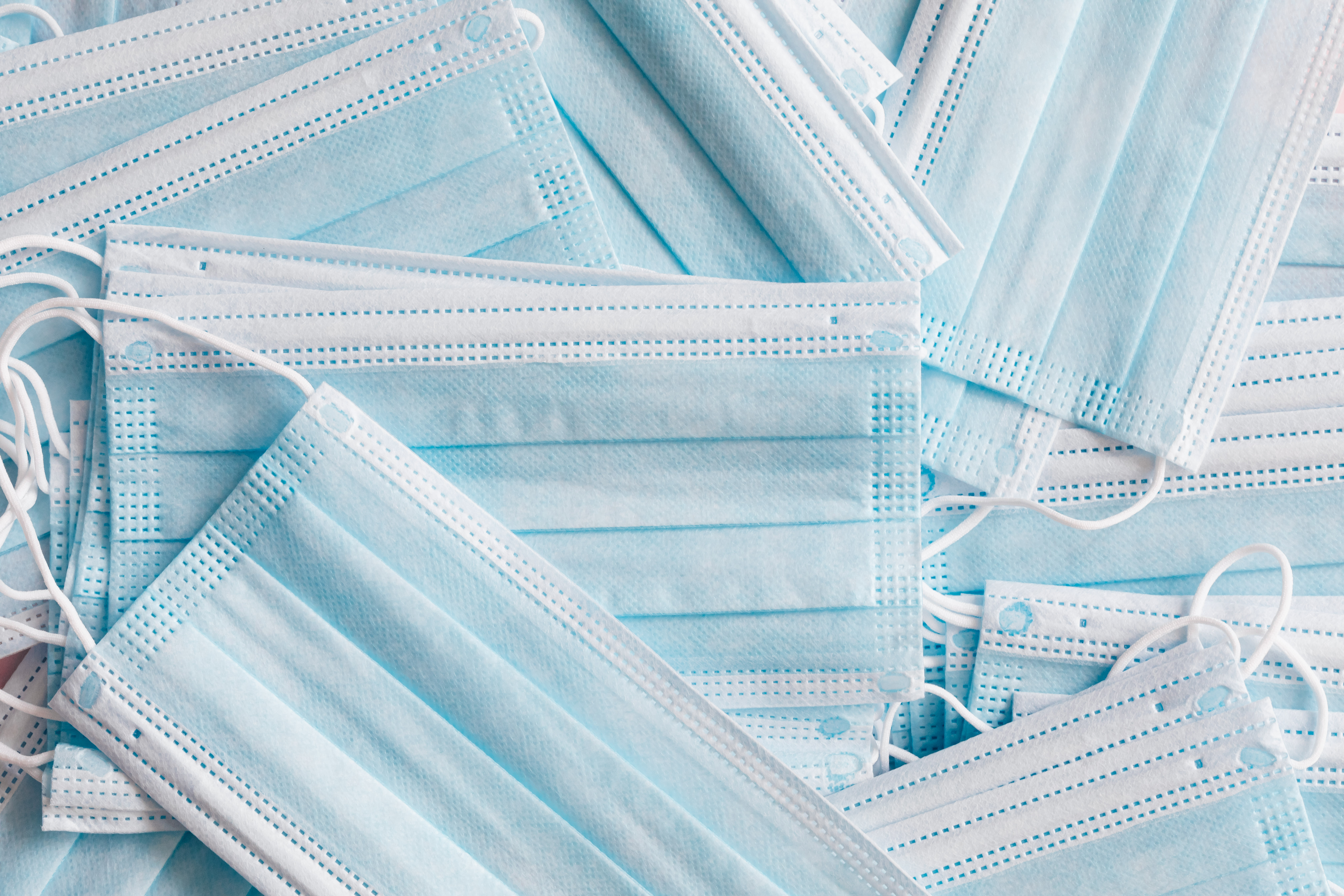"Just" PPE
Editors note: Stopping the spread of the pandemic is our immediate concern, and we encourage everyone to follow government guidelines for sanitation and health protocols. For those who can, we encourage limiting the use of disposable PPE and properly disposing it when used.
Plastic microbeads in 2015. Plastic bags in 2016. Plastic straws in 2018. Banning plastic goods that are constructed without consideration for how they will be reused or recovered is a powerful tool Zero Waste activists have used for years. While these sweeping bans can be incredibly effective, they are useless against one of today’s fastest-growing sources of waste: Personal Protective Equipment.
Personal Protective Equipment, or PPE, is a critical element in the fight against COVID-19. Items such as masks and gloves will only become more essential as Americans vie to reopen, but they also introduce a significant waste problem. As a recent study by the University College London Plastic Waste Innovation Hub points out, "Most masks available for sale are made from layers of plastics and are designed to be single-use. If every person in the UK used one single-use mask each day for a year, that would create 66,000 tonnes of contaminated plastic waste and create ten times more climate change impact than using reusable masks.” This same study offers reusable masks as an effective single-use alternative, stating that they, “Perform most of the tasks of single-use masks without the associated waste stream.” With the world already producing approximately 3.5 million tons of solid waste each year, according to National Geographic, the addition of a novel source is cause for concern and action.
As confirmed COVID-19 cases have risen, so has the public reliance on single-use gloves, masks, and disinfecting wipes, all of which are not recyclable and must be disposed of in the regular trash. Unfortunately, the increase in protective gear for the public has not been followed by an increase in education on how to properly dispose of it. Instead, the public has continued to receive false marketing on the effectiveness of recycling. For instance, an entire batch of recyclables containing only a small amount of PPE waste will likely be deemed “contaminated” by the buyer and sent to the landfill. Additional waste from improper recycling contributes to landfill leakage, which leaches toxic chemicals into the groundwater and ocean. With recycling centers already under the strain of a reduced staff size due to COVID-19 transmission concerns, the risk of recycling being contaminated and ending up in landfills is rising. Even before the pandemic began, the Los Angeles Times noted that globally, “studies suggest that less than 10% of the plastic ever produced has been recycled.” With this track record and the added challenge of PPE, we must work even harder to reduce the amount of waste we create, recyclable or not.
If you are not immuno-compromised or otherwise at heightened risk, for the environment and equality, please rethink single-use PPE. Here are a couple of proven methods you can use to limit waste and stay safe against COVID-19:
- Always opt for washing your hands with soap and water over disinfectant wipes or liquid sanitizers when possible. Not only is this the most effective way to prevent the spread of disease, but it is a nearly waste-free solution.
- Make reusable masks out of fabric you have at home. Check out the CDC website for instructions on how to make your very own reusable mask, with or without sewing! (Tip: Be sure to stay safe by always washing your reusable mask after use).
[Header photo: Blue Single Use Medical Face Masks; Karolina Grabowska via pexels all rights reserved]
Blog Category:



Add new comment